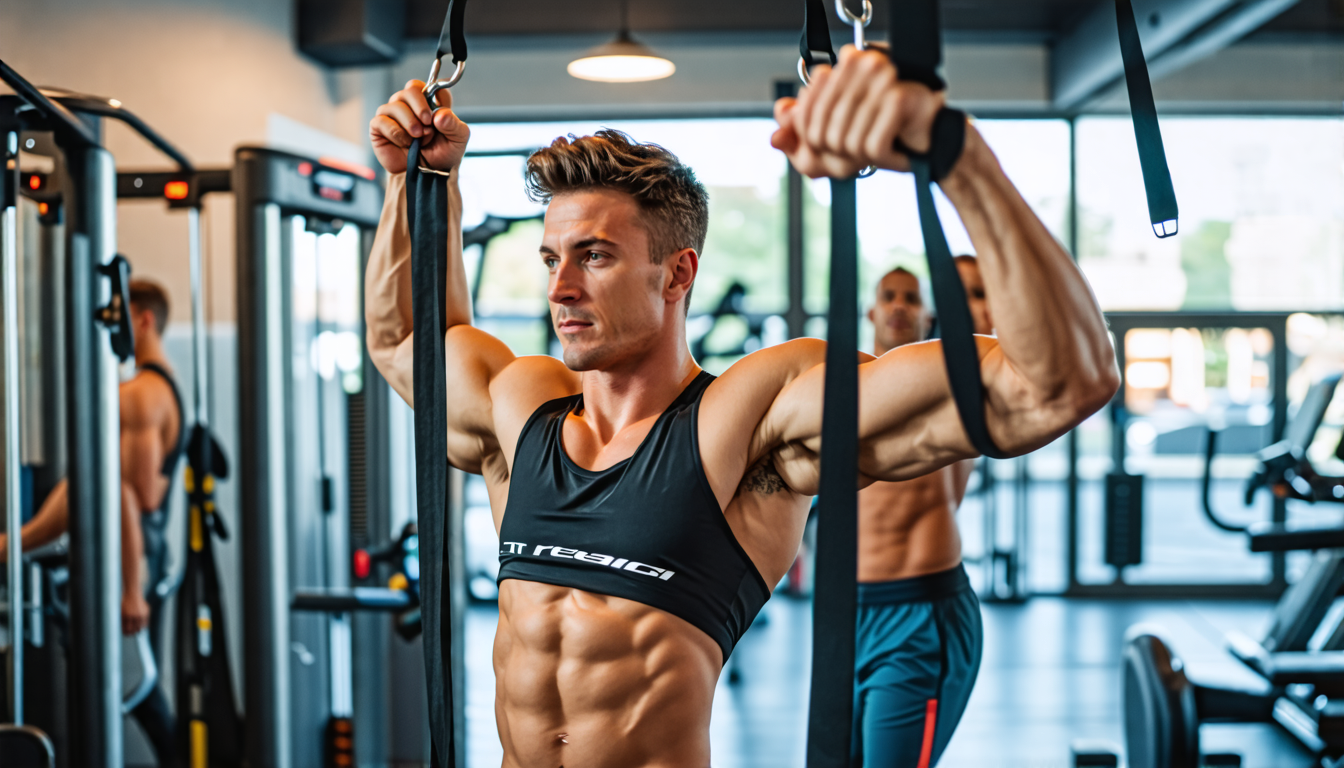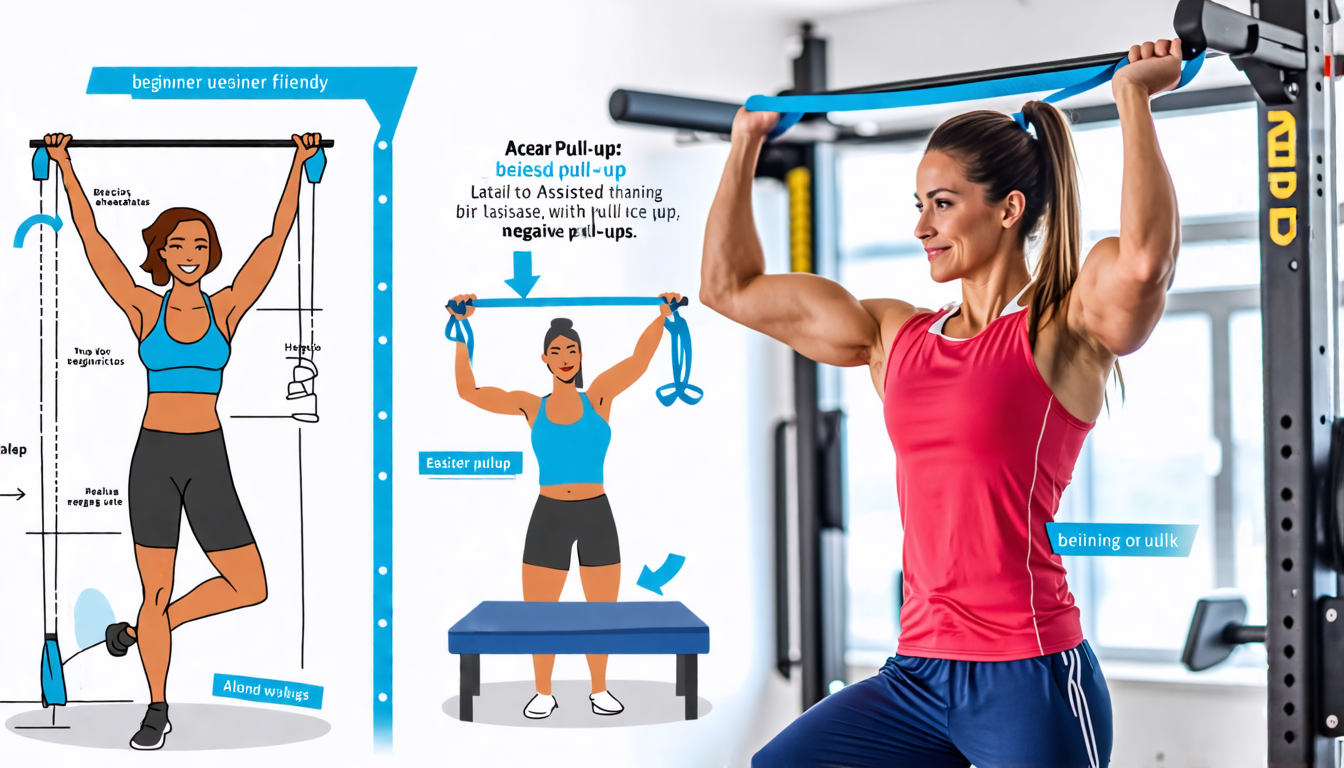Pull-ups are a fundamental bodyweight exercise that targets multiple muscle groups, including the back, shoulders, and arms. They are an excellent addition to any workout routine, helping to build strength, improve posture, and increase overall upper-body endurance. However, pull-ups can be challenging for beginners. That’s where variations come in handy. By modifying the traditional pull-up, beginners can gradually build the necessary strength and technique to perform a standard pull-up. This article will guide you through some beginner-friendly pull-up variations, including assisted pull-ups, negative pull-ups, jumping pull-ups, and chair or box pull-ups, to help you incorporate this powerful exercise into your regimen efficiently and safely.
Introduction to Pull-Ups and Their Benefits
Pull-ups are a fundamental bodyweight exercise that primarily targets the upper body, engaging muscles like the latissimus dorsi (lats), biceps, and shoulders. This compound movement involves pulling your body up until your chin is above the bar, making it an effective way to build muscle strength and improve overall fitness. Whether you are a beginner or a seasoned athlete, pull-ups can be a valuable addition to your workout routine.
Benefits of Pull-Ups
Incorporating pull-ups into your workout routine offers several benefits:
- Muscle Building: Pull-ups are excellent for building muscle mass in the back, shoulders, and arms. They help in increasing the size and strength of these muscle groups.
- Improved Grip Strength: Performing pull-ups enhances grip strength, which is beneficial for other exercises and daily activities.
- Core Stability: Maintaining a stable body during a pull-up engages your core muscles, contributing to a stronger midsection.
- Functional Fitness: Pull-ups mimic many movements we perform in daily life, making them a functional exercise that improves overall body coordination and strength.
- Variation and Versatility: There are numerous pull-up variations that can be tailored to fit different fitness levels and goals, offering endless possibilities for progression.
Importance of Variations for Beginners
While traditional pull-ups are highly effective, they can be challenging for beginners. Lack of sufficient upper body strength or improper form can make it difficult to perform even a single repetition. This is where pull-up variations come into play. By incorporating easier variations, beginners can gradually build the necessary strength and technique to execute standard pull-ups effectively. These modified versions help prevent injury and encourage consistent progress, making the journey to mastering pull-ups smoother and more enjoyable.

Top Pull-Up Variations for Beginners
Assisted Pull-Ups
Assisted pull-ups are a fantastic way for beginners to build the strength needed for unassisted pull-ups. They involve using external support to reduce the amount of body weight lifted, allowing for proper form and muscle engagement without excessive strain.
Benefits:
- Reduces stress on joints and muscles.
- Allows you to focus on proper technique.
- Gradually builds strength.
Resistance bands and pull-up machines are commonly used for assisted pull-ups.
Tips for using resistance bands:
- Choose a band that offers the right amount of assistance. Stronger bands provide more support.
- Secure the band firmly to the pull-up bar.
- Place one foot or knee in the band loop for support.
- Perform the pull-up by using your upper body while the band reduces the load.
Tips for using pull-up machines:
- Select an appropriate weight to offset your body weight.
- Position yourself so that the knee or foot pads support you.
- Engage your core and pull yourself up, focusing on shoulder and back muscle activation.
Negative Pull-Ups
Negative pull-ups, or eccentric pull-ups, focus on the lowering phase of the movement. This method enhances strength development by working muscles during their lengthening phase.
How to Perform:
- Use a step or jump to start at the top position with your chin above the bar.
- Slowly lower yourself in a controlled manner, taking 3-5 seconds.
- Repeat the process, focusing on maintaining control and engaging the back and arm muscles.
Why They’re Useful: Negative pull-ups help build the necessary strength for full pull-ups by emphasizing muscle control and endurance in the eccentric phase.
Jumping Pull-Ups
Jumping pull-ups combine a jump to initiate the movement with the goal of completing it with an engaged upper body. This variation helps bridge the gap between assisted pull-ups and full pull-ups.
Technique:
- Stand under the pull-up bar with feet shoulder-width apart.
- Jump up while grasping the bar, using momentum to assist the pull-up.
- Engage your upper body to complete the movement, bringing your chin over the bar.
- Lower yourself back to the starting position with control.
Advantages:
- Builds explosive strength and coordination.
- Engages multiple muscle groups.
- Helps transition to full pull-ups.
Safety Tips:
- Bend your knees slightly to cushion the landing.
- Focus on controlled movement to prevent strain.
- Warm up thoroughly before starting the exercise.
Chair/Box Pull-Ups
Using a chair or box for support during pull-ups can help manage body weight, making the exercise more accessible for beginners.
Instructions:
- Place a sturdy chair or box under the pull-up bar.
- Stand on the chair/box and grasp the bar with an overhand grip.
- Bend your knees slightly, letting your body hang with some weight supported by the chair/box.
- Pull yourself up, focusing on using your upper body, while the chair/box supports some of your weight.
- Lower yourself back down in a controlled manner.
Benefits:
- Promotes proper form and muscle engagement.
- Adjustable support based on fitness level.
- Allows for a gradual increase in strength.
Progressions:
- Gradually remove support by lifting your feet off the chair/box.
- Transition to assisted pull-ups with bands or machines as strength improves.
- Incorporate negative pull-ups to further build upper body strength.
In conclusion, incorporating beginner-friendly pull-up variations into your workout routine can significantly enhance your upper body strength and overall fitness. Starting with assisted pull-ups using resistance bands or machines, progressing to negative pull-ups, and trying jumping pull-ups and chair/box pull-ups, provides a structured approach to building your pull-up capability. Each variation offers unique benefits and allows you to gradually develop the necessary muscle strength and technique. By integrating these exercises, you create a solid foundation for performing unassisted pull-ups in the future, ensuring sustained progress and reduced risk of injury. Remember to focus on form, employ the suggested tips for each variation, and gradually increase intensity as your strength improves. With consistency and patience, you’ll be well on your way to mastering pull-ups and reaping the myriad benefits they offer.

